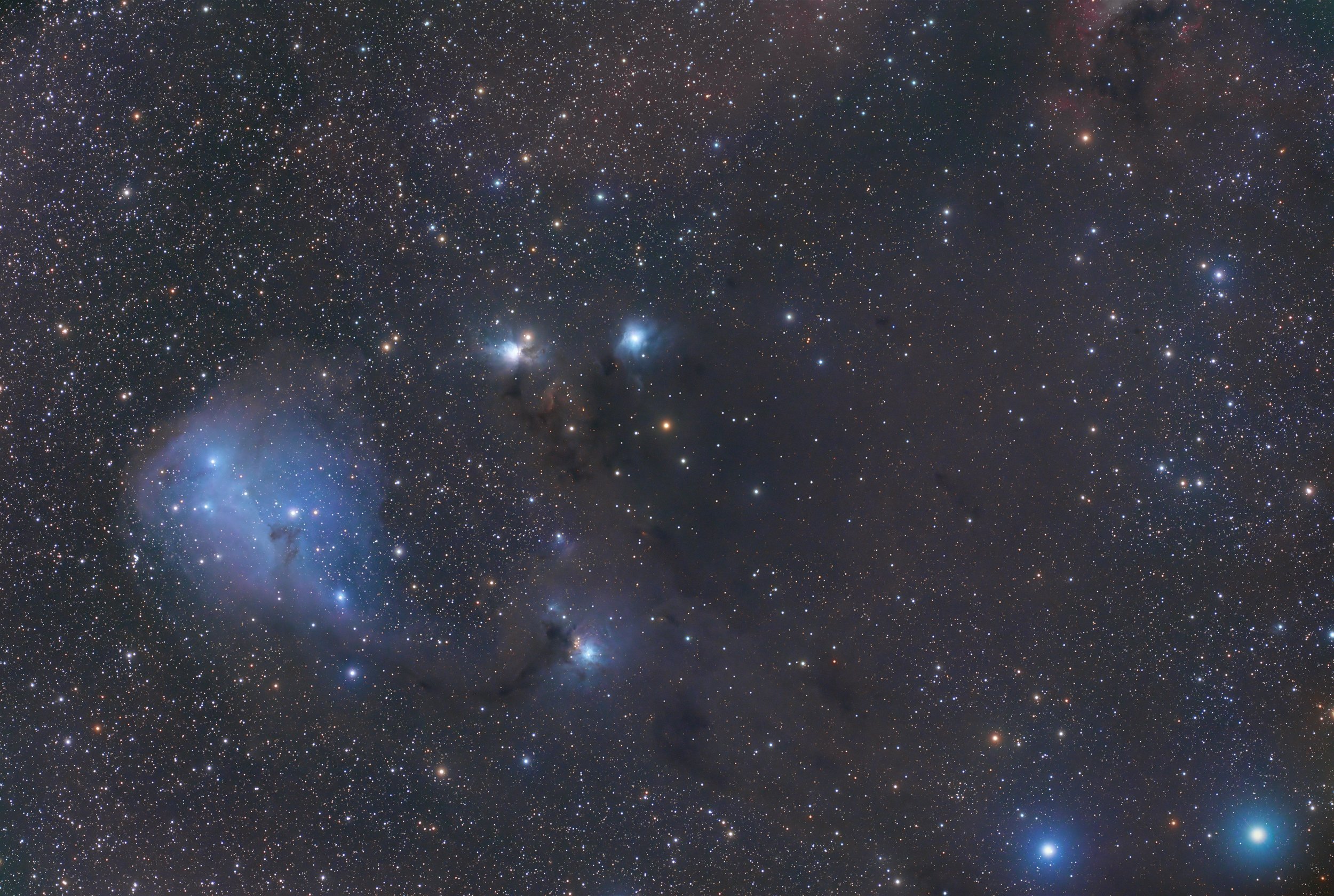
AAPOD2 Image Archives
NGC 7094 and its new feature
This wide-field view reveals an extraordinary blend of cosmic objects, each contributing to the visual and scientific richness of the image.
M15, one of the densest globular clusters in the Milky Way, glitters with the light of hundreds of thousands of stars tightly packed into a spherical shape. Located about 33,000 light-years away, its dense core may harbor a rare intermediate-mass black hole, making it a subject of ongoing research.
NGC 7094, a planetary nebula, is a stellar remnant left behind by a Sun-like star nearing the end of its life. Its central white dwarf illuminates the nebula with ultraviolet radiation, sculpting the surrounding gases into intricate shapes.
The [O III] Zone, an unexpected discovery in this image, spans a large region and glows with a faint greenish-blue hue, characteristic of doubly ionized oxygen. The nature of this halo is a mystery—potentially a remnant of ancient stellar outflows or interstellar shockwaves.
Adding to the beauty, the image is interlaced with crimson hydrogen-alpha emissions and cosmic dust clouds, which create a vivid backdrop. These elements highlight the interplay of old and new: ancient star clusters, dying stars, and the raw materials for future stellar generations.
This image serves as a testament to the power of wide-field astrophotography, revealing not only familiar objects but also uncovering hidden phenomena awaiting deeper exploration. It’s a reminder that even well-known regions of the sky still hold secrets to be discovered.
The jewels of Cygnus
Within the expansive boundaries of the constellation Cygnus, two remarkable astrophotography targets beckon sky gazers. The Crescent Nebula (NGC 6888) unveils its ethereal beauty, emanating from the powerful stellar winds of its central Wolf-Rayet star. The nebula's distinctive shape resembles a delicate crescent, bathed in hues of magenta and blue. Its intricate filaments, sculpted by the star's intense radiation, paint a captivating celestial portrait.
The Spaghetti Nebula -SIMEIS 147- SH2-240
Image Description and Details :
It took me 2 months to acquire enough lights to make anything out of it.
Indeed, I shot 14 winter nights between November and January (5 of which played with my nerves with the fog lifting at nightfall without being able to do anything).
So I shot from the Vosges, I camped in 0 ° C in Alsace, I shot from my astrobro Christope in Moselle, I went south of France to Valensole and I moved on several spots on several nights in this region.A total of 3,600 km of road to acquire the 55 hours of lights retained which consist of:
Tile 1:
Ha -> 71x600 ’’
Oiii -> 78x600 ’’
R G B -> 90x10 '' per filter
Tile 2:Ha -> 94x600 ’’
Oiii -> 78x600 ’’
R G B -> 90x10 '' per filter
While the acquisition was long and complex, so was the processing, I had to work with 400GB of data for a final image of 15 000 x 12 000px.Suffice to say that the PC has smoked!
Once again a big thanks to Christophe who illuminated me with his advices during the processing and gave me invaluable help, thanks also to Nico for his always correct eye!
Technical part:
Takahashi FSQ106 EDX4 with 645-QE super reducerAsi 2600MM Pro
Barilla (Antilla) RGB + H and O 3nm filters
Eq6r-pro
Altaïr 60/225 guide + asi 290mm mini
Sky bortle 3-4
Acquisition: N.I.N.A + Phd2
Processing: Siril + PixInsight + Photoshop
Taken in several parts of France between 2021/11/10 and 2022/01/03
Copyright : Yann SAINTY



